Tallahassee's Role in the Seminole Wars
The Seminole Wars refer to three connected wars (1818-1858) between the United States and a loose confederation of Seminole and Black Seminole people. Driven in large part by the conflict over the removal of runaway slaves and an insatiable appetite for territorial expansion, the three wars dominated Florida politics and military life for decades. Tallahassee, established as the capital of the Florida Territory in 1824 in the northwesternmost corner of the Seminole Nation, quickly found its role as a primary center of logistical support, political policy, and expansion inextricably linked with the Seminole Wars for the next 40 years.
Setting the Stage
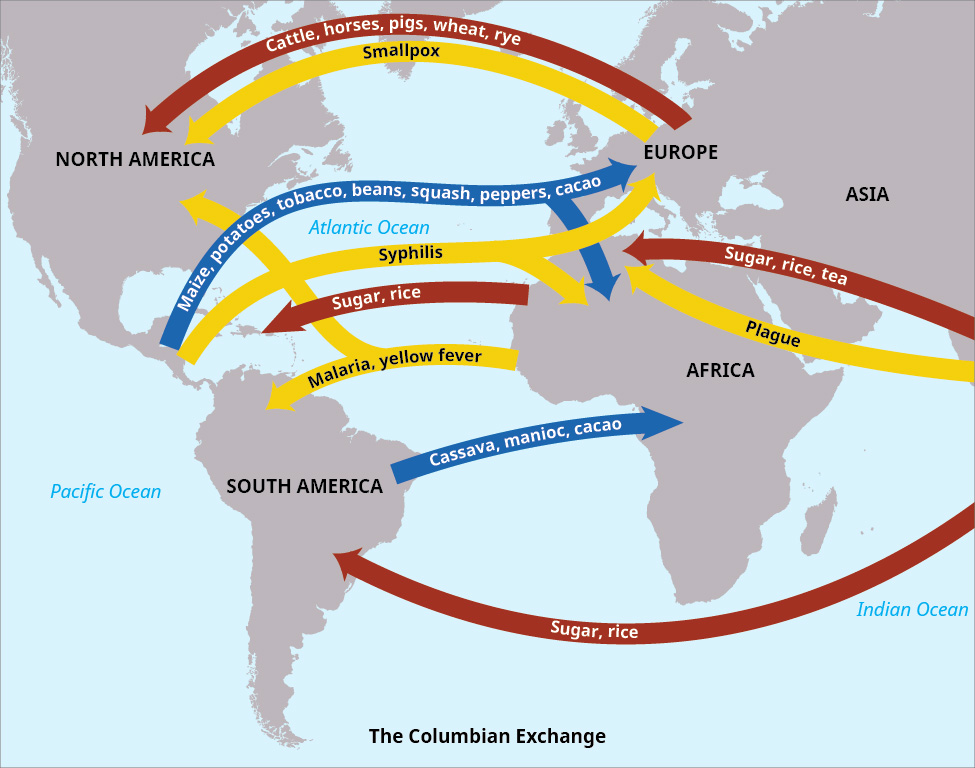
Spain initially claimed Florida in the 1500s, but this act of colonization also began what is known as the Columbian Exchange, or the rapid and widespread transfer of people, animals, food, culture, and diseases between the "New World" and the "Old World" (or the Americas and Afro-Eurasia). The transfer of these foreign diseases and microbes nearly exterminated the original native population of Florida over the next 200 years. The few remaining people were eventually rounded up into the Spanish mission system in North Florida, where the Spanish had their only areas of significant influence. British subjects were also beginning to colonize and develop along the Atlantic coast of North America to the north of Florida.
As the British colonies continued to expand westward, they inevitably came into conflict with the Native American peoples they encountered. The ever-increasing pressure eventually pushed Muscogee (Creek) refugees from Georgia and Alabama into the less densely settled areas of the Florida panhandle. The refugees and survivors of these bloody conflicts, who had been drawn together by shared cultures, languages, and circumstances, ultimately combined with the small remaining indigenous peoples and came to be known as Seminoles.
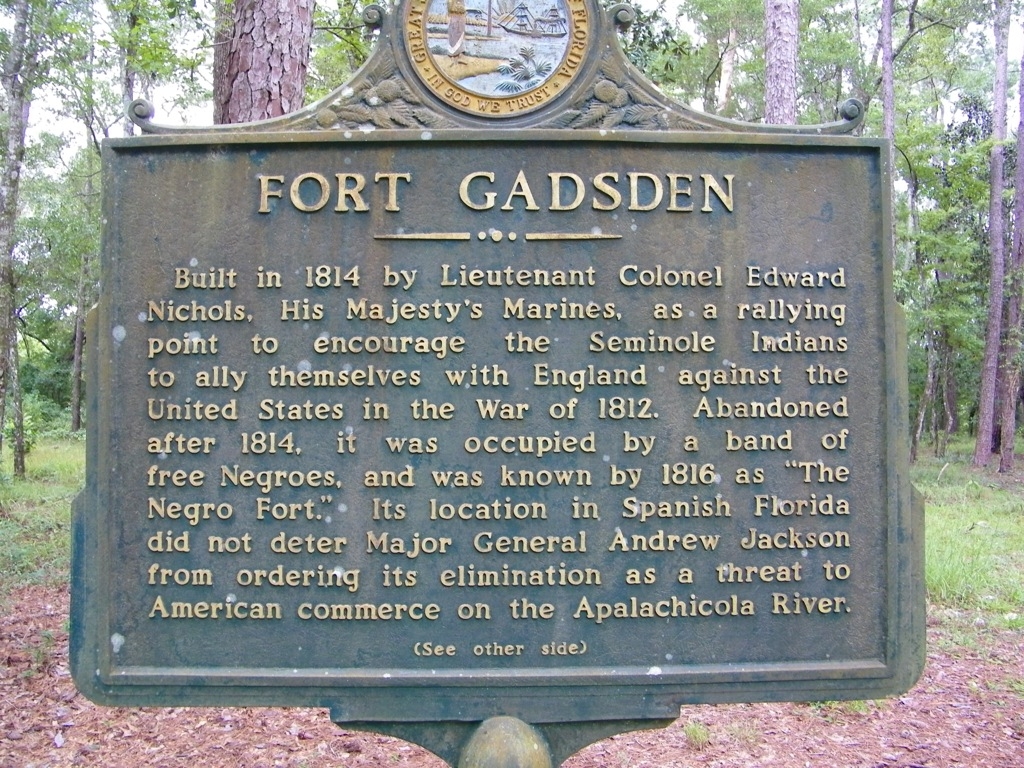
Around the same time, the Spanish colonial government was offering sanctuary to runaway slaves, part of a larger effort to undermine the growth of the British Southern Colonies. As a result, in the following decades, hundreds of enslaved Black people fled into Spanish Florida seeking their freedom. Most ended up in Spanish-controlled areas like St. Augustine and at Negro Fort on the Apalachicola River where the Seminoles (in varying degrees) recognized their equality and allowed them to live among them. These new settlements of free Black people directly threatened the survival of slavery in the Southern United States. Settlers in the Southern States were enraged, and they accused the Seminoles of luring their slaves to freedom. Tensions quickly boiled over, and powerful plantation owners began organizing their own raids into Spanish-controlled Florida, kidnapping Black people they said were runaway slaves and harassing Seminole settlements in the process. Predictably, this led to the Seminoles crossing the border to attack the United States in response.
First Seminole War (1818)
During the War of 1812, the British had built a strong fort on a bluff above the Apalachicola River known as Negro Fort. At the end of the war, the British abandoned the fort and left it to their Native American allies. Allied Native Americans, former British Colonial Marines, and Black Seminoles soon took over the fort. The fort was formidable, housing upwards of 330 people and equipped with cannons and muskets.
On April 27, 1816, U.S. Army transport boats that passed by the fort came under fire, but no one was hurt. Major General Andrew Jackson, a man known for acting quickly and without mercy, immediately ordered General Edmund Gaines to mount a full-scale attack on Negro Fort.
On July 27, 1816, U.S. Naval gunboats began firing on the fort. In a tragic accident, one of the "hot-shot" cannonballs that had been heated to white-hot in the cannon burst through the fort's roof and struck the fort's powder magazine. The explosion instantly killed the majority of the fort's occupants, between 200 and 270 people, including women and children. The blast could be heard 100 miles away in Pensacola. The survivors were taken prisoner, and the fort was burned to the ground.
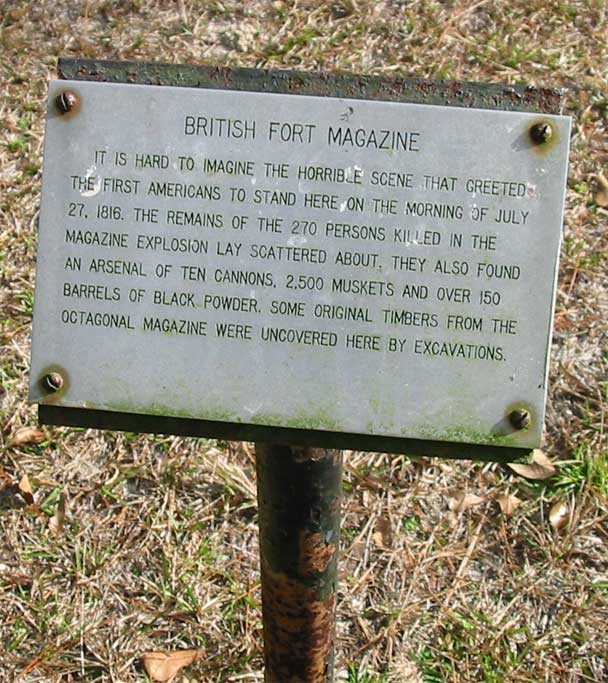
The destruction of Negro Fort and Andrew Jackson's subsequent campaign against several Seminole and Creek settlements, including the historical Seminole settlement of Anhaica (believed to be in modern day Tallahassee) in his zeal to capture or kill as many runaway slaves as possible, provoked the Spanish government. Spain was politically, militarily, and economically weak at the time and largely unable to effectively control and defend Florida. In 1819, Spain was forced to acquiesce and cede Florida to the United States in the Adams-Onís Treaty.
Tallahassee's Early Connection: Though not yet the capital, the burning and killing of Seminole and Creek settlements in and around the territory that would become Tallahassee, including Anhaica (literally in what is now downtown Tallahassee), by Andrew Jackson's troops impacted the Seminole and Creek who eventually were pushed into the south as the area developed.
Second Seminole War (1835-1842)
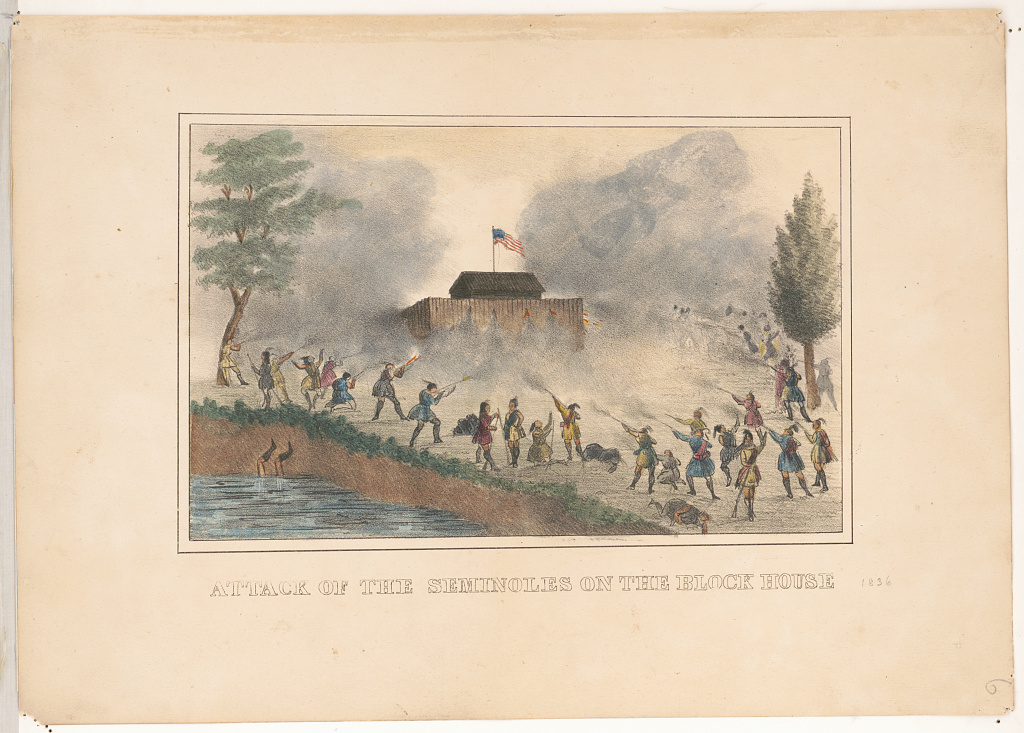
As the first American settlers came to Florida, the demand for the removal of all Native American peoples from Florida continued to grow. The Indian Removal Act of 1830, which had been signed into law by President Andrew Jackson, was the stated policy of the U.S. government to move all Native American tribes to the Indian Territory west of the Mississippi River. For the Seminoles, this meant the forced removal of their people to Indian Territory (modern-day Oklahoma). Seminoles, particularly those who had escaped slavery and joined the Seminoles, known as the Black Seminoles, were not willing to leave their homes and potentially be re-enslaved in the Indian Territory. Fighting and tension had escalated over the previous several years and would finally reach a boiling point.
Tallahassee's Central Role: By the time of the Second Seminole War, Tallahassee was the territorial capital and the undisputed logistical, military, and political center for American action. The city served as the central point for troop movements, supply lines, and military planning for the war.
The spark that set off the Second Seminole War, and perhaps the most extensive and most expensive Indian war in American history, was the Dade Massacre of December 28, 1835. Seminole warriors attacked and killed every man, woman, and child in a U.S. Army column commanded by Major Francis L. Dade.
Generals and territorial officials like Winfield Scott, Thomas Jesup, and Zachary Taylor either operated out of Tallahassee or traveled to Tallahassee to meet with territorial officials to plan their campaigns. There were forts established across Florida to help contain and fight the Seminoles, and many of these forts' supply lines either started in or came through Tallahassee. Tallahassee area militias and volunteers were also called up to participate in the fighting.
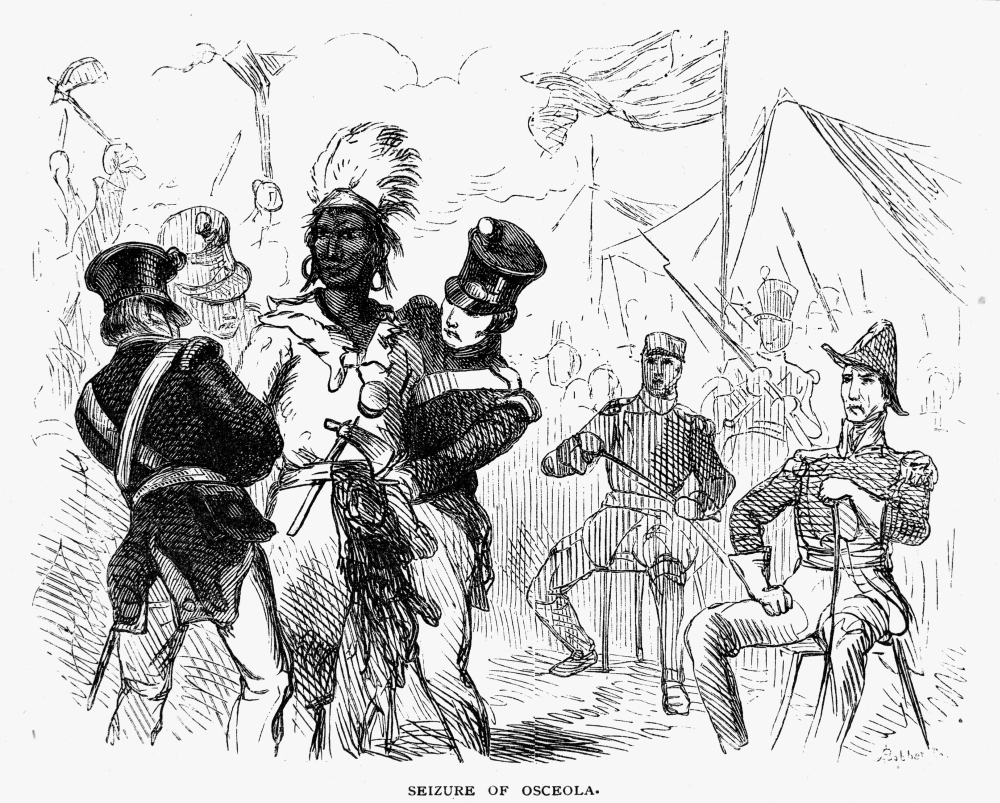
The war itself was long, brutal, and mainly involved guerrilla tactics. Seminole warriors, some of the most talented in North America, and led by legendary figures like Osceola, used hit-and-run tactics to great effect. Osceola himself would be captured under a flag of truce by the U.S. Army in 1837, a move that would stain the American reputation for decades. The U.S. Army, vastly outmatched by the Seminoles' skill and knowledge of the land, and more battle-hardened from fighting the Seminoles in the Creek War during the War of 1812, never managed to gain a decisive advantage. The conflict was incredibly costly, in both human and financial terms.
The U.S. strategy in the latter half of the war was more focused on capturing important Seminole leaders, like Osceola, and destroying Seminole food and homes. Tallahassee itself was never a direct part of the fighting. Still, the actions of Tallahassee's nascent government directly affected the lives and eventual fate of thousands of Seminoles and American soldiers. The city also benefited from the war, with the demand for supplies and services for the military supporting Tallahassee's economy.
In the end, after thousands of Seminoles and hundreds of American soldiers had died, and the U.S. Army had spent millions in today's money, the U.S. government won the war in name only. After a bitter campaign of capture and forced relocation, thousands of Seminoles had been removed to the West. A hardy group of several hundred Seminoles had outlasted and outflanked the Army, eventually melting into the Everglades. The war was over in 1842 primarily due to war-weariness and expense, not because the Seminoles had signed a peace treaty.
Third Seminole War (1855-1858)
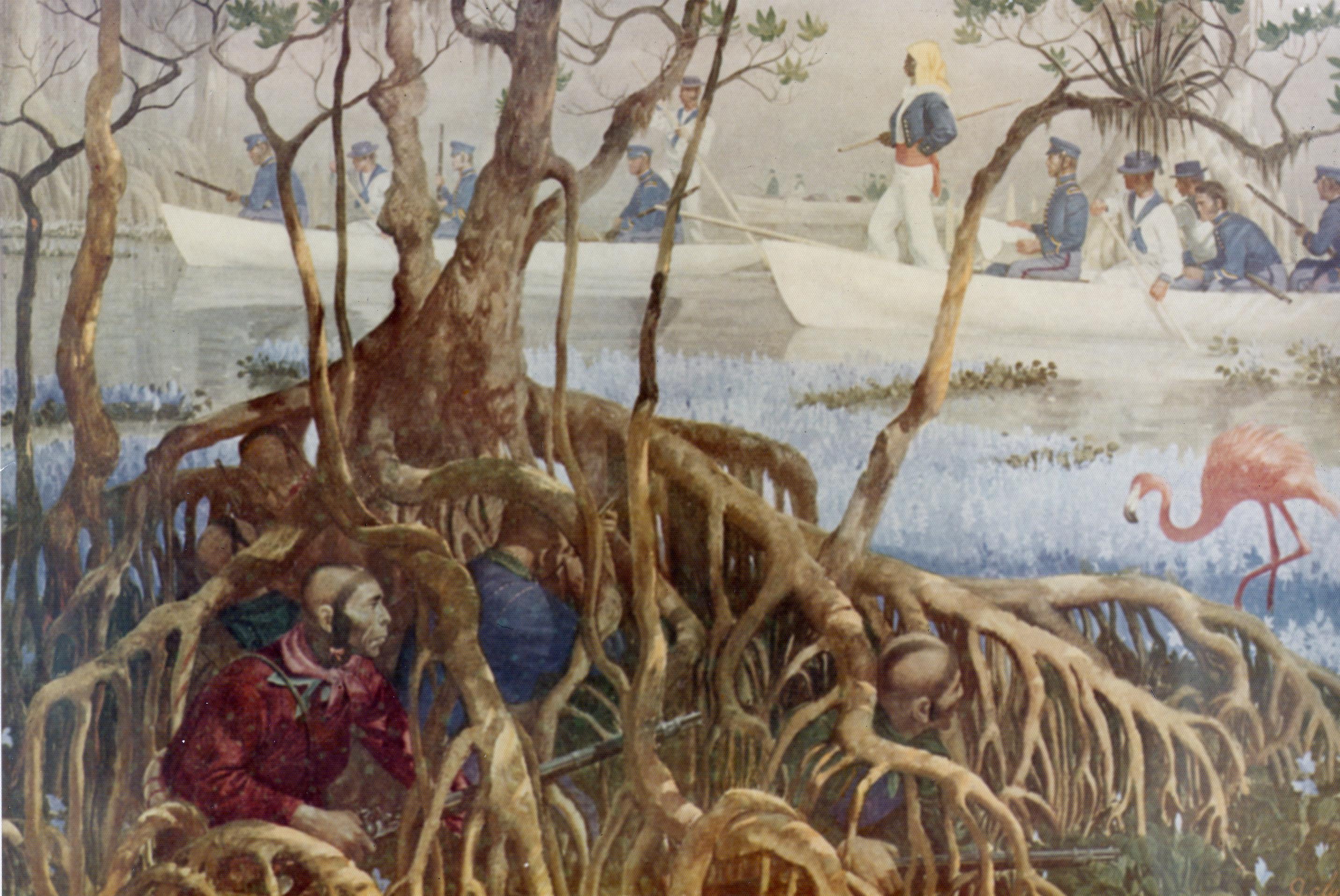
As time passed and more people came to Florida, the pressure and desire to remove the Seminoles grew. The presence of rich cypress and pine timber in the Everglades and a desire for more farmland brought more settlers into direct conflict with a few hundred Seminoles who were able to remain in Florida and avoid capture, mainly in the remote Everglades.
Tallahassee's Sustained Role: By the time of the Third Seminole War, Tallahassee was a mature administrative and political center but no longer the direct staging ground for battles. The battles were mainly in the south and were a continuation of the Second Seminole War. However, Tallahassee was where the state's policy toward Native Americans was made, and federal policies were read, interpreted, and implemented. Land grants were issued from Tallahassee, and new military campaigns were called for from Tallahassee, both of which would contribute to the start of the Third Seminole War.
The Third Seminole War is also known as the "Billy Bowlegs War" after the most important Seminole leader of the time. The conflict was less a war and more a series of expeditions and skirmishes aimed at driving the remaining Seminoles out of Florida. The military, having learned from the past, had a strategy of burning Seminole villages, destroying their food, and confiscating or destroying their livestock to force the Seminoles to leave through starvation.
The Seminoles continued using their knowledge of the Everglades and guerrilla tactics effectively, and finding and fighting them was incredibly difficult. The Seminoles' ranks, resources, and food were dwindling, though, and the conflict was not nearly as widespread or intense as the Second Seminole War. The small number of Seminoles, estimated to be in the hundreds, who had managed to stay in Florida would be largely destroyed by this campaign.
For all intents and purposes, the war was over in 1858, not because of a military victory but because the majority of Seminoles, including Billy Bowlegs, had finally given up and accepted terms for their removal to the Indian Territory. A few diehards would once again refuse to surrender and retreat further into the Everglades and be the foundation of the modern Seminole Tribe of Florida.
Tallahassee's role in the Seminole Wars is essential in many ways. From its founding as the territorial capital, Tallahassee became American operations' strategic and logistical heart. It was where decisions were made, troops were gathered, and supplies were collected and shipped to the front lines. While the battlefields and direct action were often far to the south, the policies and pressures coming from Tallahassee had direct and real impacts on the causes and course of all three Seminole Wars.
Comments